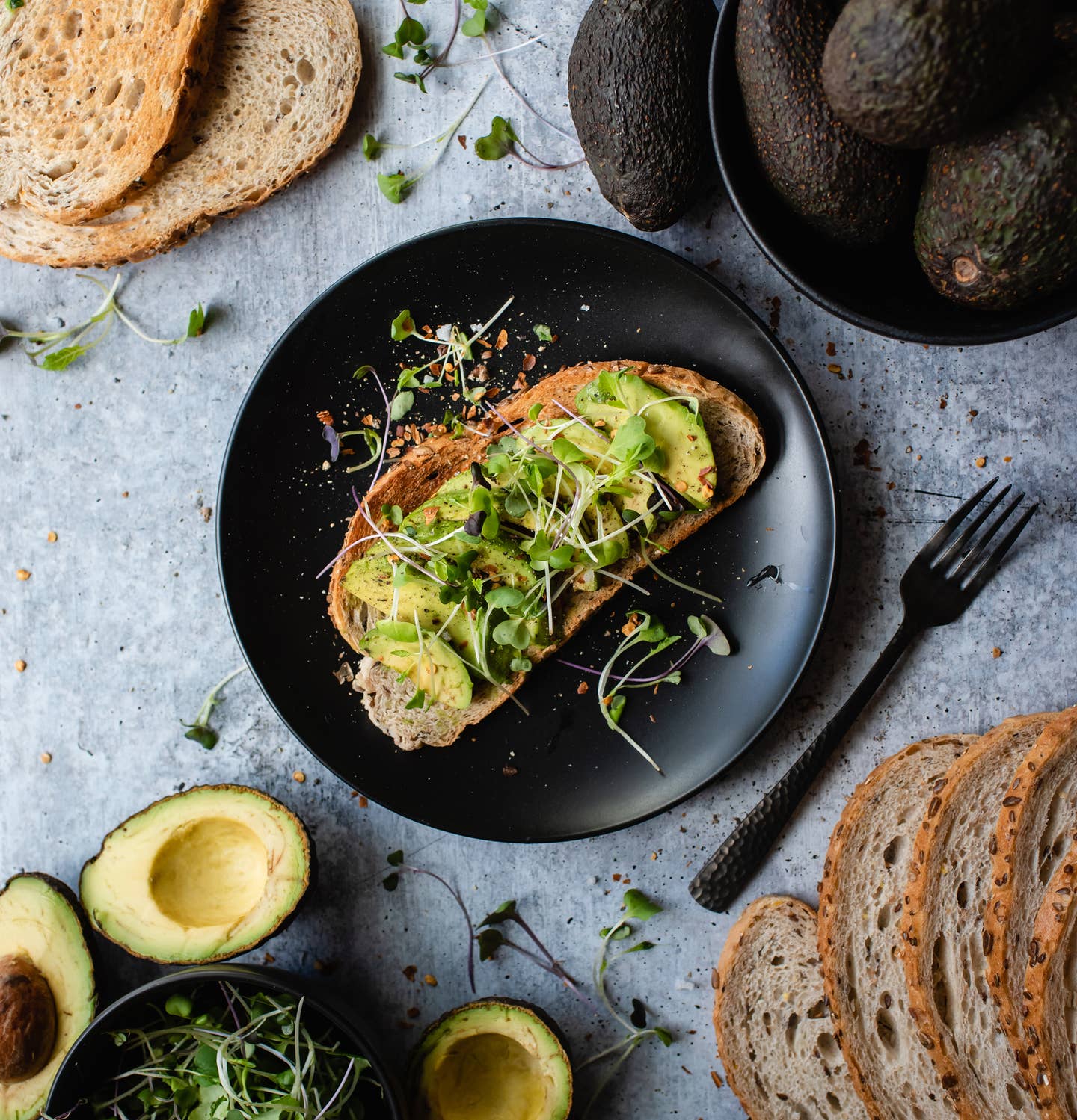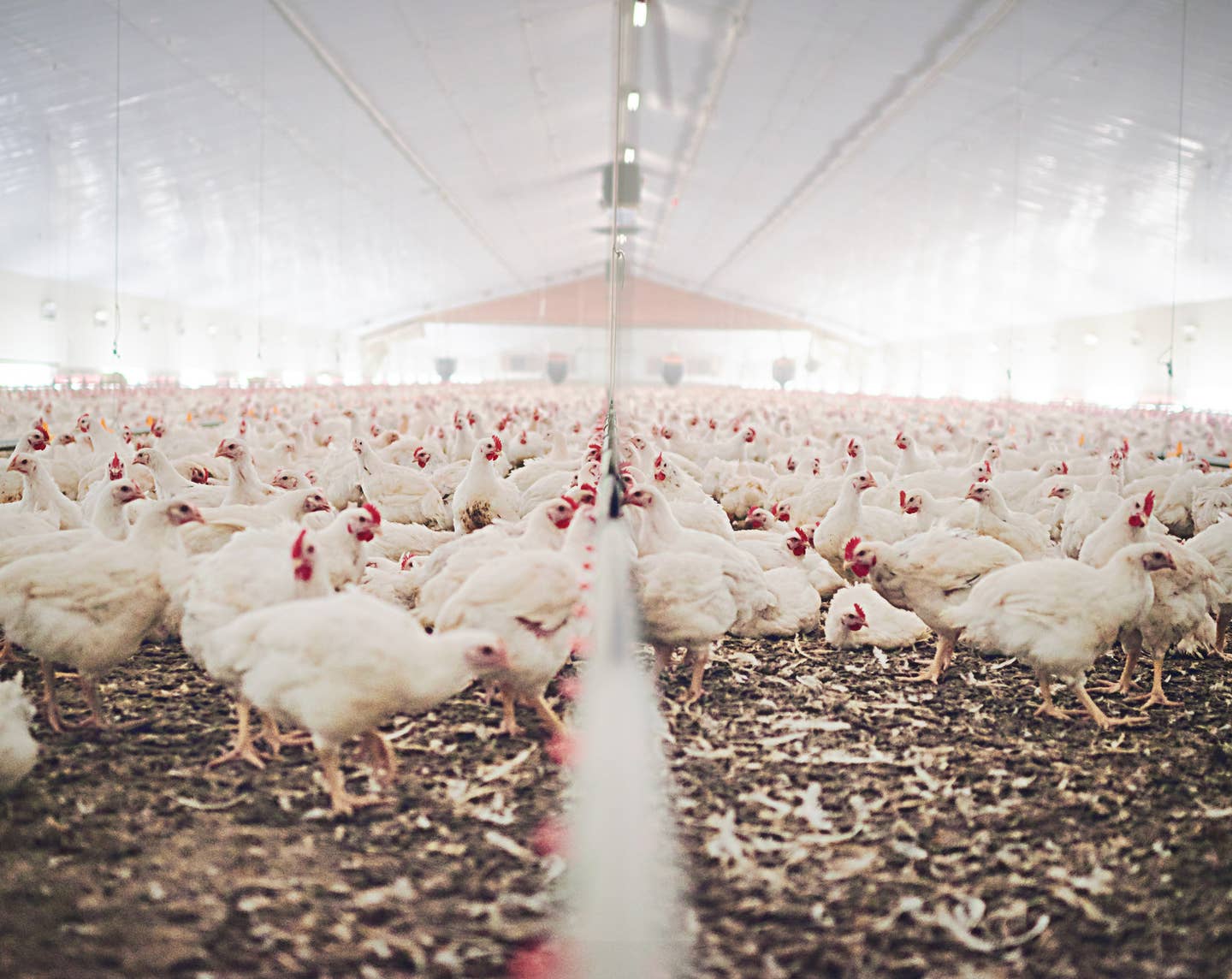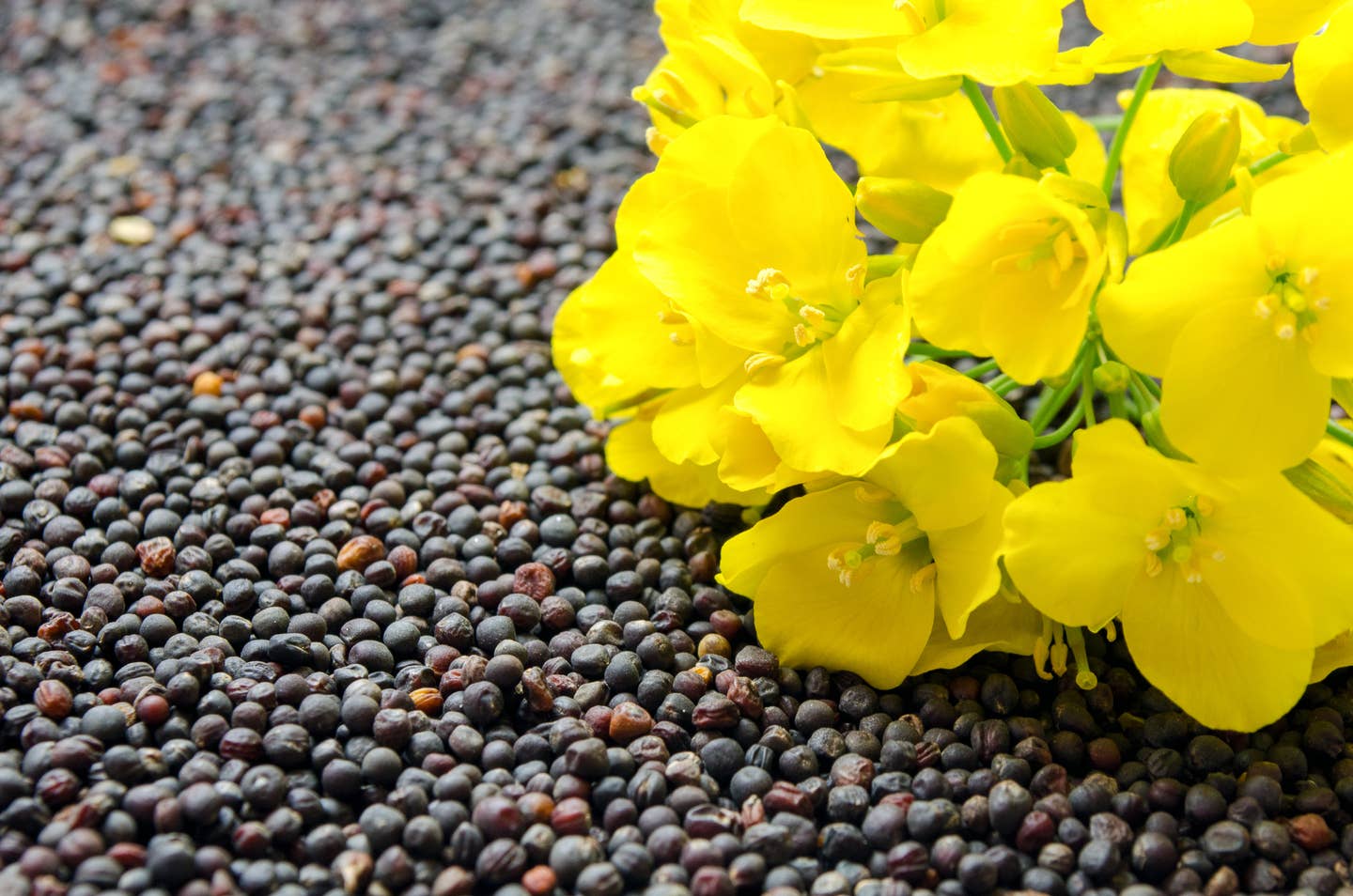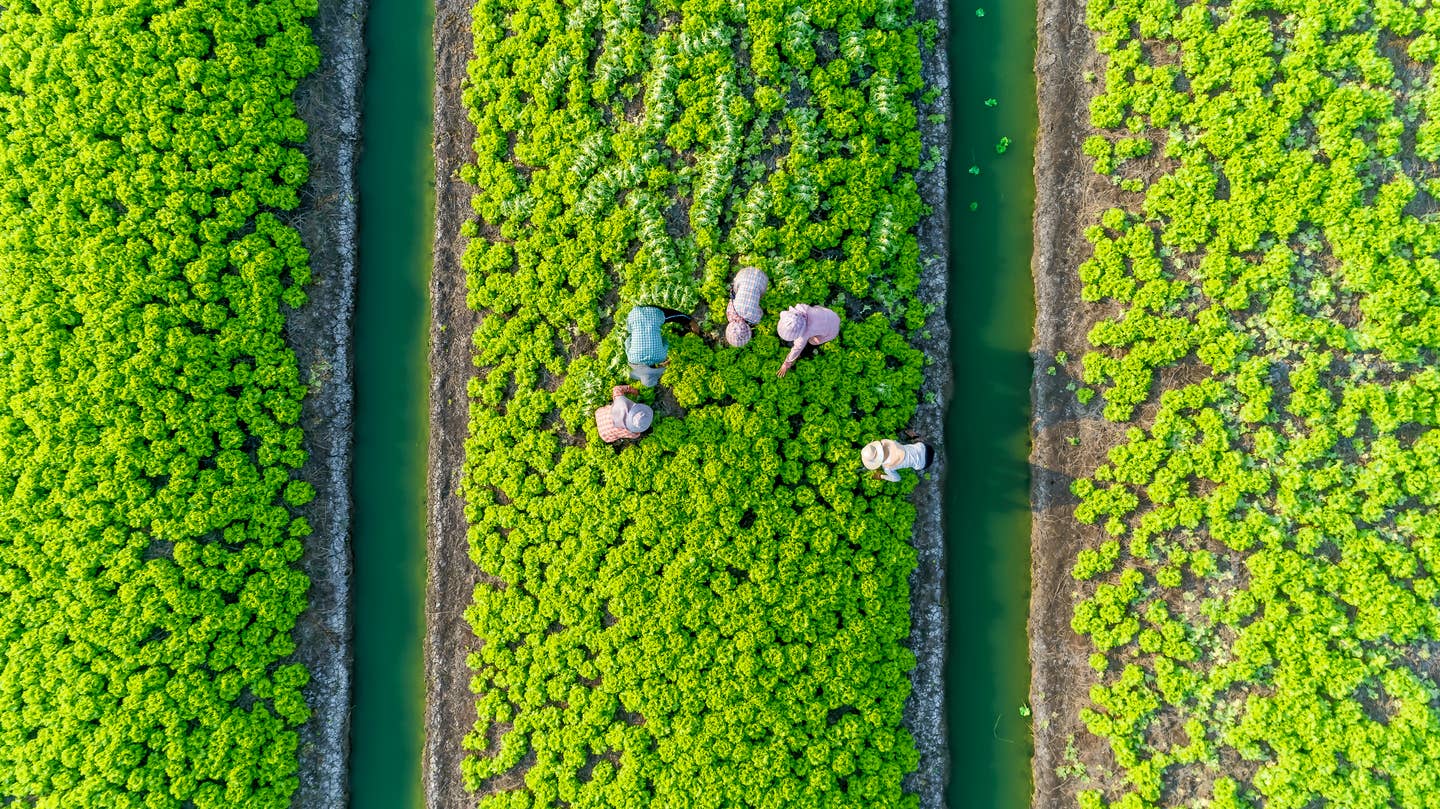
These Plant-Based Foods Are Terrible for the Planet. Here’s What to Eat Instead
A growing number of people are switching to plant-based diets for environmental reasons, and a recent survey found that the number of consumers eating plant-based for the environment has increased to 48 percent, up 17 percent in two years. However, several healthy, plant-based staples, are sadly not as sustainable as many might want to believe.
Although cutting out meat, fish, and dairy, benefits the environment, and eating a flexitarian diet could reduce greenhouse gas emissions by 52 percent, according to research done by Nature, not all plants and crops that we love (such as some nuts, fruits, and grains) are as beneficial to the environment as we would like, and some can cause a lot of damage.
Foods such as soy, almonds, and avocados, while still better environmentally speaking than, say, beef, chicken, or pork, also come with a significant environmental price tag. That said, the good news is there are plenty of other plant-based, truly sustainable foods that people can turn to instead if they are interested in benefiting the climate with their consumer choices.
Plant-Based Foods That Are Bad For the Environment
1. Avocado
People often use the environmental impact of avocados as a counterargument against vegans and vegetarians, saying that these fruits are expensive when it comes to spending our natural resources. Unfortunately, they have a point.
Why are avocados bad? They're thirsty. Avocados have become a seemingly essential part of vegan and plant-based cuisine, whether smashed avocado toast for breakfast or as a garnish on burritos and buddha bowls. According to a news article in The Guardian, which cites the Water Foodprint Network, a kilogram of avocados requires 2,000 liters of water to cultivate. The global appetite for avocados is contributing to droughts in countries as far off as Chile, the article states.
Avocados require four times as much as is needed to grow a kilogram of oranges. This tremendous water use for avocado cultivation has lead to farmers stealing water from villages, which in turn creates social unrest in Central America and Mexico, where most of the world’s avocado cultivation takes place. And that’s not taking into account the fossil fuels required to ship and truck avocados to stores across the Atlantic as demand in Europe continues to soar.
All that said, compared with beef, which is notoriously bad in terms of water usage (1,800 gallons which is 6,813 liters of water per pound of beef produced), avocados are still a lot more sustainable. But within the realms of plant-based eating, they are definitely one of the most detrimental to our planet in terms of water use.
Swap Avocados for Lentils or Sweet Potatoes
Avocados are an excellent source of fiber, carbohydrates, and vitamins —including vitamin B5 and B6. They are also a great source of healthy dietary monounsaturated fat. People can find some of these same fats in olive oil and rapeseed oil, which can easily be added to most savory meals, in cooking or as dressing. Other great plant sources of vitamin B5 include lentils and sweet potatoes. You can get B6 from peanuts, oats, and wheat germ. All these foods are more sustainable than avocados and deliver many of the same health benefits.
2. Quinoa
Quinoa is another popular whole grain in plant-based cuisine, often eaten as a healthy alternative to carb-heavy foods such as pasta, rice and potatoes. It is a great source of fiber and plant protein, and one of the few plant foods to also be a complete protein, meaning it contains all 9 essential amino acids that the human body cannot produce on its own.
However, quinoa is another plant-based food that is not as sustainable as people may believe. Traditionally, farmers cultivated quinoa at high altitudes in the Andes, however increasing demand for quinoa has led to farmers planting their crop on the lowlands as well, replacing lama farms that have been crucial in soil fertilization through the manure the animals produce.
Farmers are also unable to rotate crops, since quinoa is so popular, which leaves the fields and the earth devoid of nutrients, and eventually that impacts the yield and quality of the crop. It can also lead to erosion, which has a cascading effect on the success of the farm and village. The increase in the demand for quinoa has also led to a need for the use of machinery in the cultivation process, which increases fossil fuel emissions for the overall impact of growing quinoa.
One study projects the Global Warming Potential (GWP) of Quinoa production to be 7.82 kg CO2-equivalent per kg of protein. This GWP metric specifically measures how much energy the emissions of 1 ton of a gas will absorb relative to the emissions of 1 ton of carbon dioxide, over a set period of time. To make a comparison, the GWP of a Midwestern cattle pasture, was 43.7 kg CO2e/kg, according to one study. Quinoa is still monumentally better than beef in terms of GWP, but it does have an impact on the environment and will continue to do so as the demand keeps on growing.
Swap Quinoa for Barley, Millet, or Amaranth
If you want to slow down on your quinoa consumption, amaranth is a grain that is in much lower demand, yet similarly high in protein content to quinoa. You can also try barley and millet, two other nutrient-dense whole grains that make suitable substitutes for quinoa in a number of dishes such as grain bowls.
3. Soy
Soy is everywhere in plant-based cooking, and it shows up in many forms. Whether soy milk, tofu, tempeh, or countless other soy-based meat substitutes, soy is hard to avoid soy when you start following a vegan, plant-based, or vegetarian diet. Soy is an excellent source of protein and is extremely versatile. But as it impacts the environment, soy is less heroic.
One familiar narrative has it that the demand for soy is leading to the destruction of huge swaths of the Amazon rain forest, being cut down to make room for soy crops. While again, there is sadly some truth to this, it should be noted that a large percentage of soy production is grown for cattle feed, and therefore the meat industry holds equal responsibility for this aggressive soy farming, in terms of the impact soy has on the environment.
That said, human soy consumption has been on the rise as well, and not without consequence to the environment. According to one study, the area of land occupied by soy farms and soy production in South America more than doubled between 2000 and 2019.
Both soil compaction and soil erosion are problems on many soy farms, due to the need to mechanize and meet increasing demands. Deforestation to create the farms, and the production itself, produce a lot of greenhouse gases as well. Additionally, the fertilizers and pesticides that soy farmers use often enter the water supply in regions of Brazil and Argentina, two countries that have seen a huge increase in soy production since the 1960s.
Swap Soy Products for Legumes or Pulses
The most obvious alternatives to soy food products are legumes and pulses, due to their high protein content. They have a significantly lower impact on the environment and are grown in a greater range of countries across the globe. Try eating beans, lentils, chickpeas, and many other types of legumes. Buy them in their dried form and plan to soak them, or get them in a can and heat to eat.
4. Almonds
Almonds are a popular go-to source for plant-based snacking since they're high in protein, minerals, and vitamins and a great source of fiber. Meanwhile, almond milk has become the most popular dairy substitute, with 64 percent of the total market, according to the market research company Mintel. Consumers love it because of its low-calorie content relative to other non-dairy milk alternatives.
Almonds are also water hogs, requiring the most water of any dairy milk substitute. Producing just one liter of almond milk requires 130 pints of water. By one estimate, it takes over a gallon of water to grow a single almond. Add to that, almond tree growth leads to the death of millions of bees every year as the number of acres committed to almond trees has more than doubled in California's Central Valley, it has diminished the plant diversity bees need to survive and thrive. Almond milk sales had increased by 250 percent as of 2018, which is contributing to the wholesale devastation of the bee population. More bees die in the US every year than all other animals raised for slaughter combined.
Almond cultivators employ bees to pollinate the almond trees, but honey bees live best in biodiverse landscapes. In the almond industry, they are expected to perform a task like machines and be equally productive. However, when they enter almond farms they do not have the habitat they need, and amidst all the pesticides farmers use, many of them die.
If the life of bees concerns you then you'll want to do your best to avoid almonds and almond milk, in particular, to stop the harm these crops are causing for the endangered honey bee.
Swap Almond Milk for Oat, Hemp, or Flax Milk
Oat milk, hemp milk, and flax milk are all great alternatives to almond milk. Seeds and grains take less time and therefore generally less water to produce, and do not come with the added problem of bee destruction. These contain equal amounts of plant proteins to almond milk.
5. Cocoa
Cocoa is another plant crop that faces issues around sustainability. Plant-based chocolate products are becoming more readily available as companies find ways to serve consumers plant-based versions of their favorite sweet treat, which comes with health benefits, including being high in antioxidants, that protect against chronic diseases.
The cocoa industry has been notorious for its exploitation of workers in Africa for many decades, however, and the growth in the demand for chocolate has a negative impact on the environment as well.
Make Chocolate Fair stresses that the low income and hazardous working conditions of cocoa farmers is a serious violation of human rights as defined by the Universal Declaration of Human Rights and the International Labour Organization. Over two million children work on cocoa plantations in Ghana and the Ivory Coast alone, and more than half a million of these children work in abusive conditions. In fact, a quarter of all children aged five to seven years old living in cocoa-growing regions in West Africa are involved in cocoa production.
Cocoa bean plantations have led to huge amounts of deforestation in Ghana and the Ivory Coast, where most of the world's cocoa production takes place. Illegal cocoa-growing operations have devastated vast areas of protected land and national parks. In Ghana, cocoa farms led to the clearing of 291,254 acres of protected land between 2001 and 2014. Ghana also lost 10 percent of its entire tree coverage to the cocoa industry.
Cocoa planting leads to the loss of biodiversity, which causes wild animals and plants to disappear and lose their natural habitats. Pesticides and other chemicals that farmers use enter the water supply, poisoning animals and affecting human drinking water as well. While several organizations are doing what they can to improve the situation globally, there is still a long way to go before cocoa can be considered a planet-friendly crop. As things stand, cocoa is far from being a sustainable plant-based food source.
Swap Cocoa for Berries and Spices
Many berries are also high in antioxidants. Some of the more readily available berries that could also make a good alternative sweet treat to chocolate include blueberries, cranberries, and blackberries. Several spices also have a very high antioxidant content, including cloves, cinnamon, and peppermint.
6. Mushrooms
Mushrooms are another food source that has quickly become a staple of plant-based diets due to their versatility in cooking, their relatively high protein content, and being one of the few plant sources of vitamin D. Several meat substitutes, from burgers to hot dogs, are also made from mushrooms. However, mushrooms may have more of an impact on the environment than people would think.
A recent study around the lifecycle of the Agaricus bisporus mushroom, which is the popular white button mushroom, found that the commercial production of these fungi creates a large impact on the environment, putting the sustainability of mushrooms into question. The study looked at the lifecycle from ‘cradle to gate.’ In other words, from their growth process all the way until reaching supermarket shelves.
"Mushrooms are grown in sealed, insulated rooms where the temperature, humidity, and carbon dioxide (CO2) concentration are carefully controlled. Once the compost, spawn, and supplements are in place, casing (mostly comprised of peat moss)... is applied over the top of the mixture. Mushrooms can be harvested 18–21 days after casing in 7–10-day cycles for 35–60 days." The study then added up all the pesticides, water, and labor that go into this process to come up with an estimate of what mushrooms require in resources.
Researchers concluded that the GWP100 (100-year global warming potential) impact of commercial mushroom production ranges from 2.13 to 2.95 kg CO2e/kg. Mushrooms are clearly still a lot better than beef, or even quinoa, in terms of sustainability, however, people should be aware that their cultivation, especially as demand soars, does also have a noteworthy impact on the environment.
Swap Mushrooms for Other Vitamin D Sources
Unfortunately, there are very few plant sources of vitamin D, which is perhaps another reason why mushrooms are so seemingly crucial in plant-based diets. Fortified cereals are the best alternative in terms of vitamin D, but these usually come with other ingredients like added sugar, which make them less than healthy. Fortified orange juice also contains vitamin D and of course you can always get vitamin D by spending time in the sunshine (wear sunscreen).
Broccoli, peas, and corn are three great plant sources of protein that can also be added to numerous dishes, such as stir-fries and salads. In terms of cooking, zucchini, eggplant, and fava beans could be used in place of mushrooms in many dishes with much lower greenhouse gas emissions generated by those crops.
Bottom Line: A plant-based diet is better for the environment but not all plants are equally beneficial
When choosing a plant-based diet for the purpose of lowering the cost to the environment, some plants come with an asterisk. Avocados come at a particularly high cost, while almond growing has catastrophic effects on the honey bee. There are plenty of alternatives both in terms of nutritional content, and taste that have less of a negative effect on the environment.
More From The Beet






